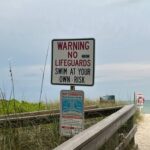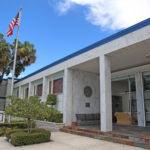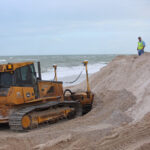INDIAN RIVER COUNTY — The beach renourishment project slated to place tons of sand on the 6.6-mile tract of shoreline from Treasure Shores Park to John’s Island has been called “the gift that keeps on giving” because, as soon as the Board of County Commissioners has nailed down a big decision, something else pops up.
This morning, they will deal with the latest surprise: the discovery of a near-shore reef close to the beach environmental officials don’t want impacted. Since commissioners awarded the $7 million project to Fort Pierce-based Ranger Construction in September, county coastal engineering staff and consultants from Coastal Tech have been modifying environmental permit applications to accomodate sand from upland sand mines. The original design of the project was based on pumped-in off-shore sand, which is of a different size and shows different characteristics once on the beach.
Engineers conducted a variety of complex tests and model runs to determine when and where the sand would wash away, based on normal, expected tidal and meteorological conditions. Then they redesigned the project to account for the results of the models and revealed the results last week.
Once the results were in, the reconfigured project would reduce the amount of sand that could be placed on the beach by 26.9 percent. The adjustments are necessary to protect a limestone ridge which sits 100 to 400 feet offshore from being covered up by sand washing back into the ocean.
In some parts of the beach that are highly eroded, such as the Sea Oaks area, sand volume would have to be reduced by 68 percent because this near-shore reef is closer to the beach than in other places.
This major change may be unacceptable to commissioners, who have the option of awarding the contract to Great Lakes Dredging to pump in sand from just off-shore near the Indian River-St. Lucie county line. Should they make that choice, the volume of sand would be able to place the entire 472,000 cubic yards of sand in the original design.
All along, since February when the topic first came up about including upland sand in the process, commissioners were told that it was unclear how upland sand would perform on the beaches, but economic concerns of keeping jobs and contract dollars local won out over environmental concerns at the time. Indian River County is breaking new ground by attempting to complete a large-scale beach renourishment project with upland sand, so Coastal Resources Manager Jonathan Gorham said there was no way to know or even predict how the model runs would come out.
Gorham will present all the scientific data to commissioners at this morning’s regular meeting and a decision is expected today. He said all the commissioners have “done their homework” and have been very engaged in the intricate science of this issue since these concerns arose last week.
Meanwhile, barrier island residents and those with interests in tourism are anxious to get sand on the beach as soon as possible. The county has a window of Nov. 1 to May 1 to perform construction on the beach as to not impact sea turtle nesting season.
If all the required permits can be secured, work is expected to commence on or around Jan. 15. Off-shore dredging could be completed in about 45 days as sand is pumped in 24 hours a day. Trucked in sand would be brought in by dumptruck 10 hours per day on weekdays for as long as it takes to transport the 347,000 cubic yards of sand that, under the redesigned project, the county would be allowed to place on the beaches.
The Board of County Commissioners meets at 9 a.m. Tuesday in Building A of the County Administration Complex.
Read prior coverage:
County may revert to sand pumping to salvage beach project
Controversy over pumped-in, trucked-in sand to be settled today
County to pick contractor this week for beach renourishment job






